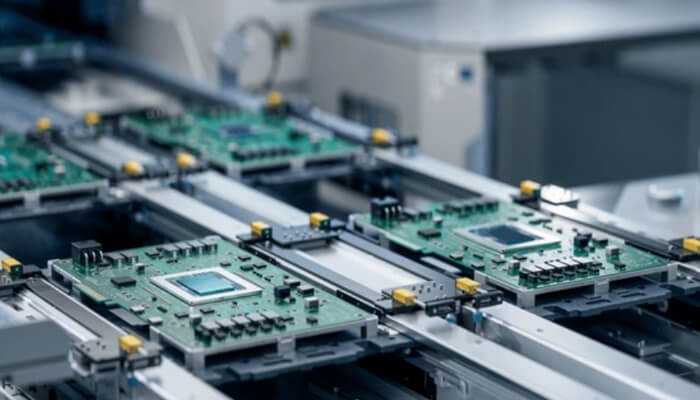We’re certain to see significant advancement and growth in the semiconductor industry in 2024. However, it’s not all smooth sailing. The semiconductor industry needs to adapt to increased global demand. The hype surrounding AI is growing by the day. Data centers and high-performance computers powering these technology advancements all rely on semiconductors. Without significant efficiency optimization and production innovations in the semiconductor industry, AI will be held back by production bottlenecks. Want to know more about how the semiconductor industry is responding to these demands with the latest semiconductor manufacturing equipment? Read on to find out more.
Miniaturization
Back in the ’60s, Intel’s co-founder Gordon Moore noted that the average number of transistors in a microchip doubles every two years. He also noted that the price of chips would be halved during the same period.
Simply put, as time goes on, computers get smaller and cheaper. Moore’s law has held strong for decades. Just think of your cell phones.
The cell phones of the past were like bricks, but these days they’re almost paper thin. Technology is now so miniaturized, that we’re really pushing the envelope on what’s technically possible.
We’re now seeing semiconductor equipment trends where manufacturers aim to make transistors smaller than 2 nanometers. This requires incredibly advanced lithography and fabrication techniques. So much so that companies like Intel and TSMC are pushing the boundaries of what’s physically possible.
Efficiency in Manufacturing
During the COVID-19 pandemic, there was a downturn in production, but the semiconductor industry bounced back. This is beneficial, as many industries depend on semiconductors, including AI, 5G, and automotive technology, which are all experiencing increased demand.
Investments and innovations are being channeled into the industry, such as more efficient semiconductor manufacturing equipment. This can help semiconductor companies boost their output.
Modern semiconductor CNC machining solutions can automatically produce parts 24/7, requiring human assistance only for the initial setup and maintenance. Innovations like these will be crucial in helping the industry meet the increased global demand.
Increased Domestic Investment
Recent supply chain disruptions and geopolitical tensions have revealed just how fragile the global tech industry is. The global tech industry is hugely dependent on a few manufacturers, such as TSMC in Taiwan. It’s no surprise that countries like the USA are taking steps to invest in production closer to home.
This is evident in the US CHIPS Act, which offers considerable financial incentives for US companies to invest in semiconductor manufacturing equipment.
If such efforts are successful, the global market for advanced manufacturing equipment could be forever changed.
Semiconductor Manufacturing Equipment Remains Crucial
Semiconductors and modern technology are inseparable. From your phone to your TV to your car, all the things you depend on every day require well-manufactured semiconductors to function.
As we stand on the verge of an AI-powered tech revolution, there’s no doubt semiconductors will be in high demand. Careful investment in semiconductor manufacturing equipment will be crucial in the years to come. So much so, that the US is currently making moves to reduce its dependency on foreign factories.
While it’s not clear what the global semiconductor market will look like in the future, one thing is certain: innovations in semiconductor manufacturing equipment will be key to success.
Interested in learning more about the tech industry? Then check out the rest of our blog posts.


